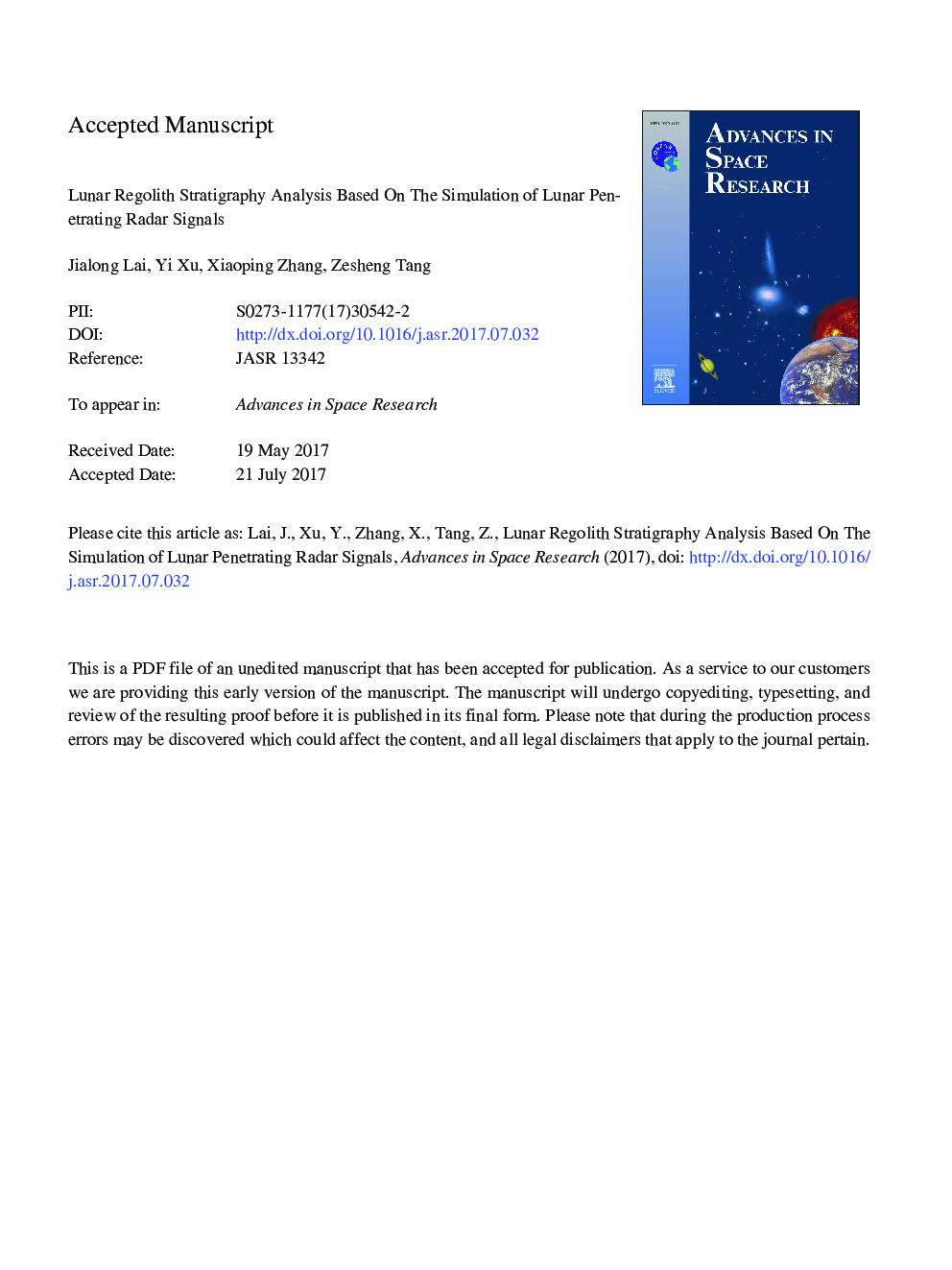| Article ID | Journal | Published Year | Pages | File Type |
|---|---|---|---|---|
| 5486432 | Advances in Space Research | 2017 | 23 Pages |
Abstract
The thickness of lunar regolith is an important index of evaluating the quantity of lunar resources such as 3He and relative geologic ages. Lunar penetrating radar (LPR) experiment of Chang'E-3 mission provided an opportunity of in situ lunar subsurface structure measurement in the northern mare imbrium area. However, prior work on analyzing LPR data obtained quite different conclusions of lunar regolith structure mainly because of the missing of clear interface reflectors in radar image. In this paper, we utilized finite-difference time-domain (FDTD) method and three models of regolith structures with different rock density, number of layers, shapes of interfaces, and etc. to simulate the LPR signals for the interpretation of radar image. The simulation results demonstrate that the scattering signals caused by numerous buried rocks in the regolith can mask the horizontal reflectors, and the die-out of radar echo does not indicate the bottom of lunar regolith layer and data processing such as migration method could recover some of the subsurface information but also result in fake signals. Based on analysis of simulation results, we conclude that LPR results uncover the subsurface layered structure containing the rework zone with multiple ejecta blankets of small crater, the ejecta blanket of Chang'E-3 crater, and the transition zone and estimate the thickness of the detected layer is about 3.25Â m.
Keywords
Related Topics
Physical Sciences and Engineering
Earth and Planetary Sciences
Space and Planetary Science
Authors
Jialong Lai, Yi Xu, Xiaoping Zhang, Zesheng Tang,
